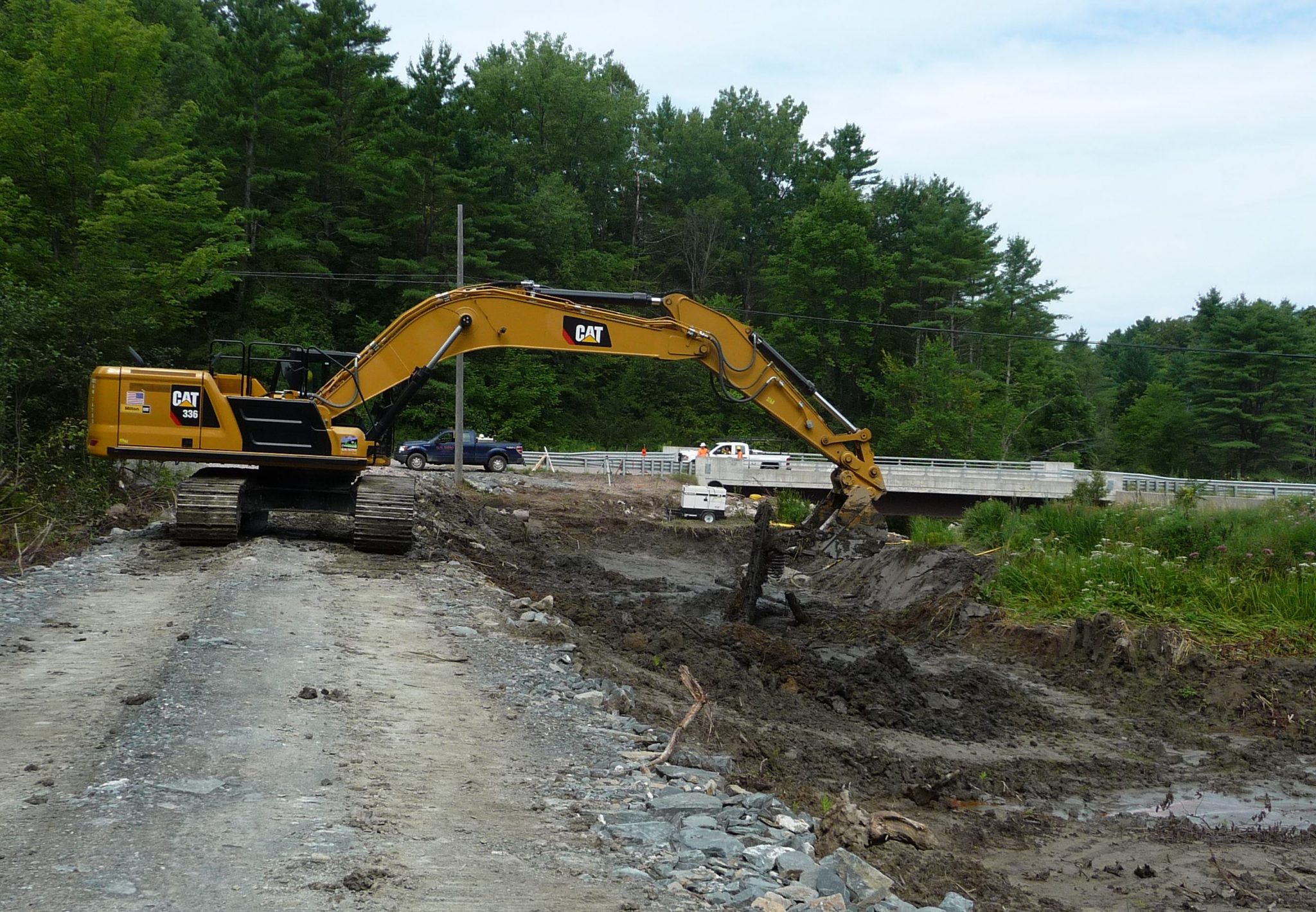Removal of Mill Pond Dam on Indian Brook in Colchester is now underway following a two-year design and permitting process.
The Vermont Natural Resources Council (VNRC) has been leading this project since the dam owner, Kim Scofield, requested assistance to remove the dam. Ms. Scofield said, “The dam is a financial burden I can live without. I deeply appreciate VNRC’s work to remove it and I’m looking forward to seeing Indian Brook flowing freely through my property.”
Dams have existed on Indian Brook since the early 19th century to provide power for a series of sawmills, but the Mill Pond Dam has not served a purpose since the last mill burned down in 1941. Meanwhile, its impoundment has eliminated 2,200 feet of free-flowing riverine habitat, which is now choked with sediment carried from upstream. The deteriorating dam is classified by the state Dam Safety Program as a “significant hazard,” meaning there is potential for loss of life and “appreciable” economic loss should the dam fail.
The Mill Pond Dam removal project entails removing the dam and 30,000 cubic yards of sediment that has filled in the former Mill Pond, which contains an estimated 17 tons of phosphorus. Removal will prevent the sediment from being carried downstream and into Mallets Bay. Phosphorus is a nutrient that contributes to algae blooms and excessive aquatic plant growth in Lake Champlain that degrade water quality, harm fish and wildlife, and limit recreational use of the lake.
In place of the Mill Pond impoundment, a new floodplain and stream channel will be established. Next year, trees and shrubs will be planted in the new floodplain. The end result will be a natural, free-flowing stream. There will no longer be a public safety hazard posed by the deteriorating dam.
“There are hundreds of small dams in Vermont that no longer serve any useful purpose,” said B.T. Fitzgerald, Dam Project & Vermont Dam Task Force Coordinator at VNRC. “They degrade water quality and aquatic habitat, restrict the movement of fish and other wildlife, and pose risks to public safety. VNRC is very interested in helping dam owners who want to remove unwanted structures, which can have lasting benefits for entire communities and ecosystems.”
VNRC is leading this project with support from its partners, The Nature Conservancy in Vermont andU.S. Fish and Wildlife Service.
Funding for design, permitting, and construction is being provided by the Lake Champlain Basin Program, U.S. Fish and Wildlife Service, Vermont Department of Environmental Conservation – Clean Water Initiative Program, Vermont Department of Fish and Wildlife – Watershed Grant Program, and The Nature Conservancy in Vermont. Milone and MacBroom Engineers of Waterbury and G.W. Tatro Construction of Jeffersonville are the principal contractors for the project.
For more information about the work VNRC, The Nature Conservancy in Vermont and other partner organizations are doing to remove unused and unmaintained dams across Vermont, visit http://freevtrivers.org.
This project was funded by an agreement awarded by the Great Lakes Fishery Commission to the New England Interstate Water Pollution Control Commission in partnership with the Lake Champlain Basin Program. NEIWPCC manages LCBP’s personnel, contract, grant and budget tasks and provides input on the program’s activities through a partnership with the LCBP Steering Committee.





